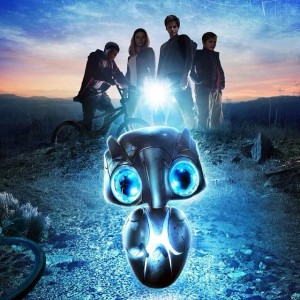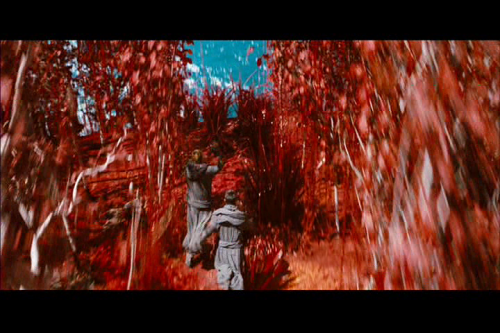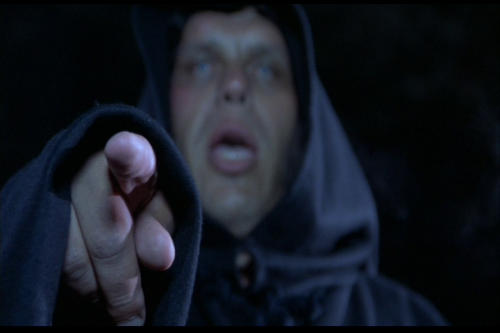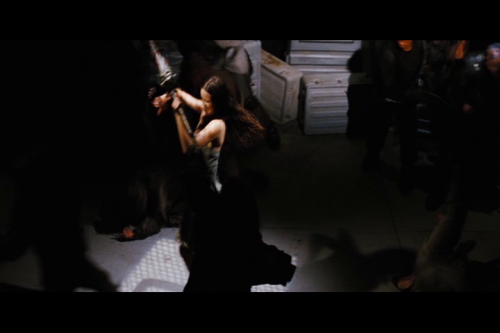The Viking Prince loves robots. Loves them. It kinda doesn’t matter what the story is about, so long as there are robots in it: Pacific Rim, Big Hero 6, Earth’s Mightiest Heroes (which has both Ultron and Vision, plus assorted bad guys’ mechas), Voltron, Transformers, I’m not kidding. So when the movie Earth to Echo, featuring an adorable little robot from outer space, showed up on Netflix, of course we had to watch it.
 The movie was decent. In it, the kids have to help the little robot, who crash-landed on our planet, evade shady government agents and get back to its ship so that it can go home. Of course this requires all manner of crazy, definitely not parentally-approved, shenanigans, including but not limited to riding their bikes into the desert at night, stealing the shady government agents’ truck, and getting into a car chase with said truck. (The kids, I should add, are about 13.)
The movie was decent. In it, the kids have to help the little robot, who crash-landed on our planet, evade shady government agents and get back to its ship so that it can go home. Of course this requires all manner of crazy, definitely not parentally-approved, shenanigans, including but not limited to riding their bikes into the desert at night, stealing the shady government agents’ truck, and getting into a car chase with said truck. (The kids, I should add, are about 13.)
All of which got me thinking about the virtue of prudence.
Now, Prudence is not how most people imagine her: a fussy-faced old maid with her iron hair pulled back in a tight bun and her grey dress buttoned up to her pointy chin, scowling and shaking her bony finger at you whenever you think about doing something fun. Yes, she wants you to eat your vegetables (carrots are good for your eyes!) and brush your teeth (cavities are no fun, and dentist visits are expensive), but if you need to steal (borrow! with every intention of giving it back!) a truck to save the space robot from the shady government agents, then by God grab the keys.
In Mere Christianity, C.S. Lewis defines prudence this way:
Prudence means practical common sense, taking the trouble to think out what you are doing and what is likely to come of it. Nowadays most people hardly think of Prudence as one of the ‘virtues’. In fact, because Christ said we could only get into His world by being like children, many Christians have the idea that, provided you are ‘good’, it does not matter being a fool. But that is a misunderstanding. In the first place, most children show plenty of ‘prudence’ about doing the things they are really interested in, and think them out quite sensibly. In the second place, as St Paul points out, Christ never meant that we were to remain children in intelligence: on the contrary. He told us to be not only ‘as harmless as doves’, but also ‘as wise as serpents’. He wants a child’s heart, but a grown-up’s head. He wants us to be simple, single- minded, affectionate, and teachable, as good children are; but He also wants every bit of intelligence we have to be alert at its job, and in first-class fighting trim….
Right action at the right time, that’s Prudence.
Of course that means if the apparently-crazy-by-worldly-standards path, the slim-chance-but-also-the-only-chance path, is the best path, then you must take it. Prudence doesn’t mean hanging back and not taking risks.

Jumping off a cliff to escape angry natives? Prudent!

Dressing your giant in a holocaust cloak and lighting him on fire to intimidate the guards? Totally prudent!

A diminutive psychic ninja locking herself in with space zombies in order to save her crew? The prudent-est!
Or, take another view.
I knew a dude whose philosophy of life was basically this: do what makes the best story.
Now, we could spend a lot of time hammering out the details of this philosophy, the ethics and morality and what makes a story “good”, but the basic premise is actually a pretty good starting point. Our lives are stories we are given to write. We’re handed the basic setup: home, family, place of birth, social status, and so on. But from there it’s up to us.
And what does make the best story? Think of your favorite tales, the ones that speak to your soul, the ones you return to again and again. Do they contain marvels, adventures, strange sights and interesting characters, risk-taking and romance, courage and daring deeds? Or do they contain … I don’t know. Lots of television watching, commuting, maybe a 401K and a well-diversified stock portfolio.* (And if the latter, what are you doing at this blog?)
All the virtues are interconnected; prudence requires courage: the courage to stand up for one’s convictions, to jump off a cliff if necessary, even just the courage to say hello to that attractive someone and see what happens next. The kids in Earth to Echo displayed magnificent prudence (and courage, and love, and other virtues too), doing what was right and necessary to save their newfound alien friend. And maybe kids are better at prudence, true prudence, because life has not yet battered over-caution and self-preservation-above-all-else into their souls? Part of that whole “be like little children” thing.
We are given only one life, one story to live–all the more reason to take risks, to be bold, to make it a tale of romance and brotherhood and battling against evil, doing the right thing even when it is hard and dangerous and terrifying.
You know, prudently. 😀
*Not knocking a well-diversified stock portfolio, BTW. Just hinting that if your stock portfolio is the focus of your story, you might want to diversify your life a bit too.
**P.S. I just want you to know I had to watch bits of The Princess Bride, Star Trek: Into Darkness and Serenity to get the screencaptures I wanted for this post. The things I do for you people! 😀
Read Full Post »





















